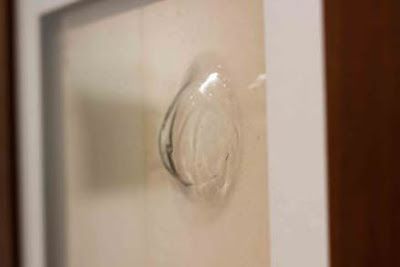Donna Watson Assemblage: Antique Shinto Box, bird nest, bird eggs, sumi brush, Asian coin, Asian game pieces, joss sticks, reproduction of a crow skull
Orhan Pamuk, Turkish writer and winner of the Nobel prize for literature published his novel titled MUSEUM OF INNOCENCE in 2008. He also spent years, and all his Nobel prize money roving and searching Istanbul's junk shops and market stalls looking for bits and pieces with which to furnish the novel he was writing.
In the novel, Kemal, a prosperous man has a love affair with a lower class shop girl and cousin, Fusun. After ending the affair, Kemal becomes obsessed, over a period of 2,864 days, of obsessively collecting objects, like cigarette stubs that Fusun had smoked.
Pamuk, the author, also began to collect objects to assemble and correspond to the families and impassioned lover's stories in the book.
Pamuk spent many years creating a museum to house the thousands of objects he collected for the novel. The museum is housed in a wine-red four storey building constructed in 1897, in Istanbul, Turkey.
The museum consists of 83 cabinets, each representing a chapter of the book. The novel's wealthy protagonist, in love with his cousin, soothes his despair by collecting everything that she has touched, and he decides that all these things must be displayed in a museum.
"The Museum of Innocence - just like the novel - is about the line between fiction and reality." -Orhan Pamuk
The first display greeting the visitor is the cigarette wall with 4,213 cigarette stubs smoked by Fusun.
The exhibit is accompanied by a film reel, shot by Pamuk himself, showing a woman's hand movements as she smokes and taps a cigarette. Beneath each stub is a handwritten note about the day in which the stub was stolen.
"I think that if museums, like novels, were to focus more on private and personal stories, they would be better able to bring out our collective humanity." Orhan Pamuk
"Most of us, faced with a traumatic loss of life or love, find consolation in attaching ourselves to objects." Orhan Pamuk
Before writing his novel, Pamuk began to buy a large number of objects from shops at the flea markets in Istanbul. Instead of writing about the objects and then looking for them, he did the opposite. He went shopping first, and wrote his book based on all the things acquired.
When Pamuk was younger, he dreamed of becoming a painter and devoted himself to art. As he became a writer, the visual artist in him became dormant. "The artist lying dormant in the depths of my soul has been looking for an opportunity to come back to life." --Orhan Pamuk
The novel and the museum are concerned with entirely different sides of the same story. This is why visitors to the museum do not need to have read the book to appreciate the displays in the museum.
A ticket to the museum is printed in each copy of the book. When visitors arrive at the museum with their books, they can show the ticket page and have it stamped.
"Don't bend; don't water it down; don't try to make it logical; don't edit your soul according to the fashion. Rather, follow your most intense obsessions mercilessly." Franz Kafka




















































